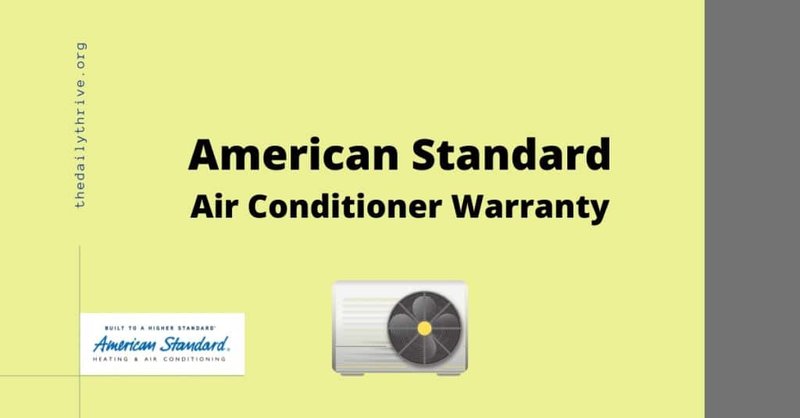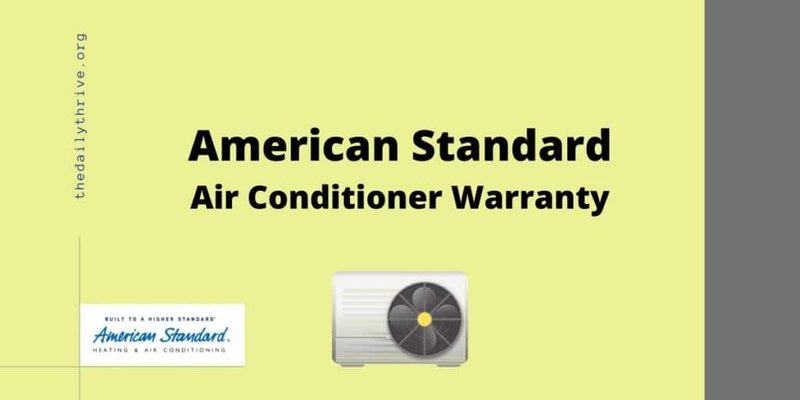
Imagine you just bought a secondhand car. It looks great, runs smoothly, but you’re wondering—does the original warranty still cover it? HVAC systems are kind of the same. When you pick up a used American Standard HVAC system, a big question pops up: can you still register it for warranty? This matters because that warranty acts like a safety net, catching you if something goes wrong.
American Standard is a solid, trusted brand known for quality heating and cooling units. But warranties can be tricky, especially with used equipment. Let me explain how their warranty system works and whether or not you can tap into it if you’re not the first owner.
Understanding American Standard’s Warranty Policy
Here’s the thing about warranties: they’re designed to protect the original buyer of a product for a specific period. American Standard HVAC units usually come with a standard manufacturer’s warranty that covers parts and sometimes labor for a certain number of years. When you register your HVAC system after purchase, it activates this warranty and may even extend coverage.
However, the warranty is typically linked to the serial number of the unit and the original buyer’s information. This is important because if the unit has already been registered by the first owner, the manufacturer might not allow a second registration.
So, when it comes to used American Standard HVAC systems, the warranty status depends on whether it was registered before and the exact terms of the warranty. Honestly, this can vary between models and purchase agreements, which is why it’s worth digging into specifics.
Can You Register a Used System for Warranty?
Short answer: usually no. Most American Standard HVAC warranties aren’t transferable to new owners once the original owner has registered the unit. The warranty is tied closely to the first purchase and registration date, which means if you’re buying a used system, chances are the warranty has already been claimed or the clock is ticking.
Here’s the reality: if the previous owner never registered the product, you might be able to register it yourself. But that’s rare because most dealers or installers register the system right after installation. Even then, registering a used system might not give you the full warranty benefits from the start. Sometimes, it simply activates the remainder of the original warranty period.
In other words, if you bought a three-year-old unit with a 10-year warranty, you might have seven years left—but only if the warranty was never triggered or voided.
Why Does Warranty Transferability Matter?
You might be wondering: why is warranty transferability such a big deal? After all, a used HVAC system is cheaper, right? Well, a warranty gives you peace of mind. It’s like an insurance policy against unexpected repairs or failures—especially for a complex system like heating and air conditioning.
Without warranty coverage, you’re on the hook for any repairs or replacements. And HVAC work isn’t cheap. From replacing a compressor to fixing control boards or even troubleshooting the thermostat sync issues, the costs add up fast.
Plus, warranty transfers (or lack thereof) can affect your home’s resale value. A buyer might think twice about a home with a used HVAC system that lacks warranty protection. So, keeping this in mind can help you decide whether buying used is worth the potential risks.
How to Check Warranty Status on a Used HVAC System
Before you buy, it’s smart to check whether the American Standard HVAC system still has an active warranty—and if it’s transferable. Here’s how you can do it:
- Ask for the serial number: The serial number is usually on the unit’s data plate—often found on the side or inside an access panel.
- Contact American Standard directly: Call their customer service or visit their website to check the warranty status using the serial number.
- Request proof of purchase or registration: This can confirm if and when the unit was registered, and who the original owner was.
Doing this helps you avoid surprises. Sometimes, even if the warranty isn’t transferable, you might find the system is still under coverage because it wasn’t registered properly or the original buyer never claimed the warranty.
What Happens If the Warranty Isn’t Transferable?
In cases where the warranty won’t transfer, don’t panic. You still have options to protect yourself and your HVAC investment.
For example, many HVAC dealers offer extended warranties or service plans for used systems. These plans can provide coverage for parts and labor for a set period after your purchase. It’s like buying a mini-warranty tailored to the used equipment.
Another approach is investing in routine maintenance and regular troubleshooting to catch problems early. For instance, syncing your thermostat or resetting the system regularly can keep it running smoothly. Also, keeping an eye on parts like filters and batteries in your remote thermostat helps avoid breakdowns.
Honestly, if you’re handy or have a trusted HVAC technician nearby, you can often extend the life of your used system with good care—even without the original warranty.
Comparing Brand New vs. Used American Standard HVAC Systems
Here’s a little story: a friend of mine bought a used American Standard furnace because it seemed like a good deal. But after a year, a key part failed, and since the warranty didn’t transfer, the repair cost was nearly the same as a new unit’s monthly payment.
Buying new typically means you get the full warranty period, factory support, and often dealer-installed certification. Plus, if your new system includes smart features like remote syncing or firmware updates via Wi-Fi, the support is usually better aligned with warranty coverage.
Used systems, meanwhile, might cost less upfront but can come with hidden costs—like shortened warranties, outdated remote controls that need frequent battery changes, or troubleshooting issues that could have been prevented.
Tips for Buying a Used American Standard HVAC System
If you’re set on buying used, here are some tips to make the process smoother and safer:
- Inspect the system carefully: Look for wear, corrosion, or missing parts.
- Get documentation: Ask for any manuals, warranty papers, or installation records.
- Check the model and serial number: Confirm compatibility with replacement parts, remote controls, or upgrades.
- Arrange a professional inspection: A licensed HVAC technician can spot hidden issues or troubleshoot syncing and reset problems that might cause headaches later.
- Ask about maintenance history: Knowing if the system was regularly serviced can hint at its reliability.
By doing some homework, you reduce the risk of running into expensive repairs or unexpected failures down the road.
Final Thoughts on Registering Used American Standard HVAC Systems
So, can you register used American Standard HVAC systems for warranty? The answer isn’t black and white. Most of the time, warranties are non-transferable, meaning the best you can hope for is leftover coverage or registration if it was never done before. But that’s a rare exception rather than the rule.
If you’re buying used, make sure to check the warranty status upfront, plan for maintenance, and consider extended service agreements. Sometimes, the peace of mind that comes with a new system and a fresh warranty is worth the extra investment.
At the end of the day, your HVAC system is the heart of your home’s comfort. Whether used or new, making sure it’s well-paired with warranty or service protection can save you money, stress, and chilly nights in the long run.
